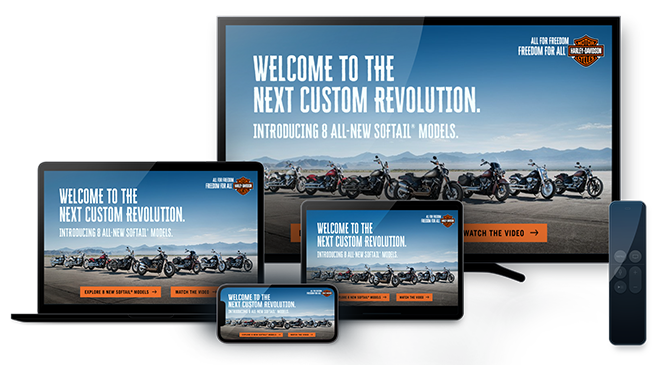The Incrementality Imperative: Why Retail Media’s Future Depends on Proving ROI

In the ever-tightening world of advertising budgets, one metric has risen from buzzword to business imperative: incrementality. As brands scrutinize every dollar spent, they’re demanding more than just clicks and conversions – they want to know whether their retail media investments are actually driving net new outcomes. The explosive growth of AI in advertising only accelerates this trend – more data is available, and the tools to automate make measurement more accessible than ever, yet still complex to operationalize.
That shift in mindset is reflected in recent data: a 2024 survey by the Association of National Advertisers (ANA), highlighted by eMarketer, found that 71% of advertisers now consider incrementality the most important KPI in retail media network (RMN) investments.
In other words, RMNs are under growing pressure to not only perform, but to prove that performance would not have happened otherwise. As Jonatan Fasano, Business Development Director at Walmart Connect Mexico and Central America, put it during Infillion’s session at eMarketer’s recent Commerce Media Summit, “The name of the game today seems to be incrementality.”
And yet, for all the urgency, proving true incremental lift remains one of the toughest – and most nuanced – challenges in the space.
What Is Incrementality and Why Is It So Hard to Prove?
Incrementality aims to measure the true impact of an ad by isolating the “lift” it generates – whether that’s new customers, increased sales, or conversions that wouldn’t have happened without the campaign. But agreeing on what counts as incrementality is still a work in progress.
According to a report from Skai and Path to Purchase, only 36% of CPG marketers and agency professionals feel confident in proving incrementality. Even more troubling: 44% doubt the accuracy of their incrementality results, making it the single most-cited barrier.
Definitions vary. Nearly half (48%) define incrementality as “new-to-brand ad-attributed conversions.” Another 48% say it’s when ads are shown where a product isn’t already appearing organically. Others tie it to conquesting competitor pages or reaching customers who haven’t purchased before.
This inconsistency in what actually constitutes “incrementality” muddies the waters for RMNs. If brands and agencies can’t align on what it means, how can they measure it, let alone optimize for it?
Measuring Incrementality Is a Moving Target, Not a Static Score
As mentioned, incrementality measurement doesn’t come with a neat, universal formula. Results evolve, and their value depends heavily on the window you’re measuring within. A campaign may look wildly effective over 7 days but barely move the needle at 30. That variability makes comparisons across platforms – and even within your own media mix – tricky if you’re not controlling for timing and context.
But the real starting point isn’t just data, it’s intent. Before diving into control groups and lift curves, marketers need clarity on what they’re actually trying to uncover. Is the goal to understand the broad contribution of a channel to brand growth? Or are you pressure-testing a specific campaign element, like creative or audience targeting? Without that clarity, even the best-run tests can miss the mark.
And while campaign-level tests can be useful, stacking them up into a broader strategy doesn’t always add up. Each test lives in its own context, with different audiences, goals, and market conditions. It’s tempting to blend those results into one tidy narrative, but often, you end up with a smoothie that tells you more about your blender than the true ingredients of your business impact.
Approaches to Incrementality Measurement
Despite the confusion, leading advertisers and platforms are starting to break through the noise by adopting a mix of sophisticated strategies. But remember, it’s not a one-size-fits-all.
- Data Clean Rooms as a Strategic Baseline
Data clean rooms are gaining traction as a privacy-compliant way to match first-party data and uncover where real lift is happening.
Clean rooms allow for granular analysis at the SKU, category, or audience level, helping brands understand not only if a campaign drove incremental value, but where and with whom it performed best. This level of visibility is especially useful in RMNs, where advertisers often juggle multiple retailers, formats, and audience strategies simultaneously.
- Advanced Measurement Tactics Like MMM and MMT
Traditional last-touch attribution can’t measure what would’ve happened anyway. That’s why marketers are increasingly turning to methods like media mix modeling (MMM) and match market testing (MMT).
MMM uses historical data and statistical models to quantify the impact of each marketing channel over time, helping brands understand how different investments contribute to outcomes like sales or conversions. According to Supermetrics, 49% of marketers worldwide are now using MMM, reflecting a growing commitment to deeper, more holistic measurement (eMarketer).
MMT on the other hand serves as a way to test more granularly, providing a bottom-up, real-world view by running campaigns in select test markets and comparing results against closely matched control markets. This approach is especially effective for evaluating in-store, local, or omnichannel retail media campaigns, offering clear insight into campaign impact without relying on user-level attribution.
- Creative Variant Testing with Incrementality Overlays
It’s not just where you advertise, but how. Some marketers are now using incrementality as a creative KPI by measuring which ad formats, messaging, or visuals lead to greater new-to-brand purchases, or what formats best convert competitive switchers.
With Infillion’s interactive formats - like TrueX and IDVx - and shoppable video, brands can measure not just engagement, but lift tied to the creative format.
- Technology Partners to Extend Capability
Only 26% of in-house marketers currently conduct incrementality testing internally (Funnel Research, 2024), leaving a wide lane open for partnerships.
Retail media partners are also increasingly looking to demand-side platforms that can support incrementality natively. That’s where Infillion’s MediaMath DSP plays a key role. The platform is API-first, which allows for highly automated and speedy execution of sophisticated tactics like incrementality. Infillion powers RMNs like Walmart Connect Mexico in engaging audiences more meaningfully - on-site and off-site - and measuring outcomes more precisely. Through its partnership with Walmart Connect Mexico, Infillion helps advertisers optimize against new-to-brand KPIs while enhancing full-funnel measurement.
This kind of tech-forward partnership enables RMNs to go beyond the last click, proving their value in a more sophisticated, data-rich way.
- Using AI as the New Engine Behind Incrementality
As the pressure to prove ROI intensifies, marketers are turning to AI to take incrementality measurement to the next level. AI enhances incrementality measurement by improving the accuracy, speed, and scalability of traditional methods. It helps identify causal impact more precisely through better test/control matching, more advanced media mix modeling like handling non-linear relationships to media and outcomes, and predictive uplift modeling. AI also enables synthetic control creation when true comparisons aren't available, and it supports continuous, real-time optimization based on incremental performance. Lastly, when you think about it in terms of experimentation, AI enables DSPs to run continuous, automated A/B and multi-variant tests that feed into incrementality measurement, quickly learning and scaling the most effective tactics without manual intervention. So, while AI doesn’t replace traditional incrementality methods (at least for now), it certainly supercharges them.
| KPI Category | Example Metrics | Why It Matters |
|---|---|---|
| Incremental Conversions | % of conversions not driven by organic activity | Core metric to prove ad campaign effectiveness beyond baseline behavior |
| New-to-Brand Buyers | % of buyers who have never purchased from brand | Key signal of growth and acquisition |
| New-to-Category Buyers | % of buyers who are new to the overall category | Helps quantify market expansion efforts |
| Incremental Revenue | Lift in revenue vs. control/no-ad scenarios | Demonstrates actual business impact |
| ROAS (Incremental) | Revenue from lift ÷ spend | Shows true return from ads, not inflated by organic or habitual purchases |
| Shelf Share Gains | Increased visibility across placements/categories | Helps prioritize where ads are moving the needle on digital shelf presence |
| Lift by Channel | Incremental performance by media channel | Informs cross-channel optimization and investment strategy |
The Road Ahead: More Testing, Better KPIs
Although incrementality testing is still an emerging practice among marketers, interest in it is gaining momentum. Many brand marketers are beginning to recognize the value of controlled experiments, like new-to-brand and lift tests, as essential tools for measuring real impact, and this approach is expected to play a bigger role in the near future.
The challenge now is helping brands get there… and get there faster.
“Retail media needs to evolve always ahead of the brands and agencies to set that packet of new KPIs that continue proving the incrementality we can drive,” said Fasano during Infillion’s deep dive with eMarketer.
To build on that, Gabe Paton, SVP, Sales Engineering at Infillion, added:
“[As far as measurement] it’s being able to provide dashboards that show brand and SKU-level sales lifts and, yes, incrementality, incrementality, incrementality. I mean, that’s where we’re going and that’s what’s really going to give the brands and advertisers the edge.”
That means RMNs must do more than provide data – they must define the standards, surface the insights, and have robust tech infrastructures to deliver everything. The ones who succeed will be those who treat incrementality not as a bonus metric, but as the baseline for value, measured over time, not in a single campaign.
For more insights on incrementality and the evolving role of retail media, watch the full deep dive discussion with Infillion and Walmart Connect here.
Subscribe to our blog:
Related Posts:

Independent Agencies Are Rewriting the DSP Rulebook
For more than a decade, programmatic buying relied on systems that delivered automation and scale, but offered limited visibility into how decisions were made. But those constraints are now harder for agencies to justify. Independent agencies are no longer willing to...

From Data to Decisions: Preparing Retail Media for AI Agents
Why infrastructure maturity is the key to future growth Artificial intelligence is already reshaping digital advertising. Predictive algorithms now steer bidding strategies, and machine learning models help refine audience targeting. But in retail media, the...

Retail Media’s Budget Tug-of-War: Uniting Brand and Demand Through Full-Funnel Strategies
Retail media has grown up fast. What started as a straightforward way to capture search dollars at the point of purchase is now one of the most scrutinized and strategic channels in the industry. Retail media is no longer just about conversion rates and ROAS—it’s...
Let's Connect


